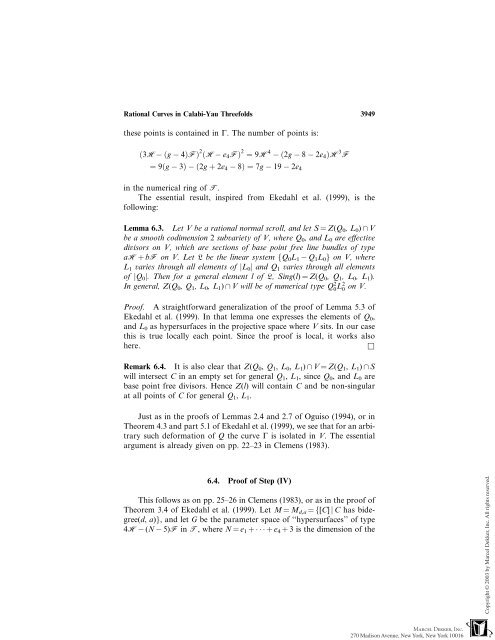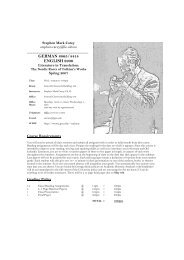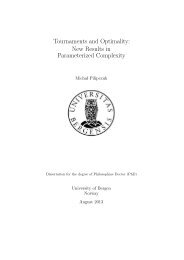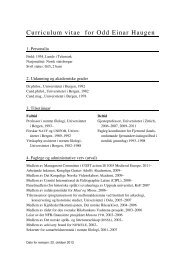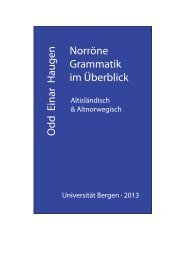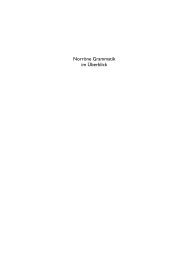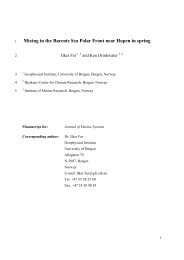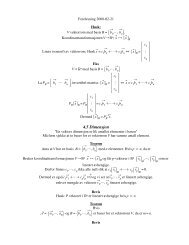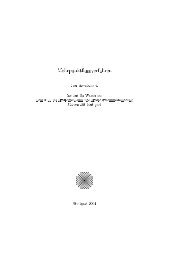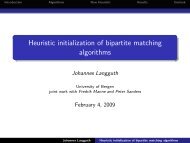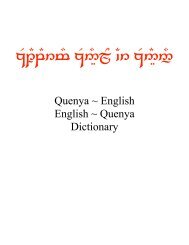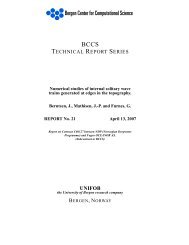Rational Curves in Calabi-Yau Threefolds
Rational Curves in Calabi-Yau Threefolds
Rational Curves in Calabi-Yau Threefolds
Create successful ePaper yourself
Turn your PDF publications into a flip-book with our unique Google optimized e-Paper software.
<strong>Rational</strong> <strong>Curves</strong> <strong>in</strong> <strong>Calabi</strong>-<strong>Yau</strong> <strong>Threefolds</strong> 3949<br />
these po<strong>in</strong>ts is conta<strong>in</strong>ed <strong>in</strong> G. The number of po<strong>in</strong>ts is:<br />
ð3H ðg 4ÞFÞ 2 ðH e4FÞ 2 ¼ 9H 4<br />
¼ 9ðg 3Þ ð2g þ 2e4 8Þ ¼7g 19 2e4<br />
ð2g 8 2e4ÞH 3 F<br />
<strong>in</strong> the numerical r<strong>in</strong>g of T.<br />
The essential result, <strong>in</strong>spired from Ekedahl et al. (1999), is the<br />
follow<strong>in</strong>g:<br />
Lemma 6.3. Let V be a rational normal scroll, and let S ¼ Z(Q0, L0) \ V<br />
be a smooth codimension 2 subvariety of V, where Q0, and L0 are effective<br />
divisors on V, which are sections of base po<strong>in</strong>t free l<strong>in</strong>e bundles of type<br />
aH þ bF on V. Let L be the l<strong>in</strong>ear system fQ0L1 Q1L0g on V, where<br />
L1 varies through all elements of jL0j and Q1 varies through all elements<br />
of jQ0j. Then for a general element l of L, S<strong>in</strong>g(l) ¼ Z(Q0, Q1, L0, L1).<br />
In general, Z(Q0, Q1, L0, L1) \ V will be of numerical type Q2 0L2 0 on V.<br />
Proof. A straightforward generalization of the proof of Lemma 5.3 of<br />
Ekedahl et al. (1999). In that lemma one expresses the elements of Q0,<br />
and L 0 as hypersurfaces <strong>in</strong> the projective space where V sits. In our case<br />
this is true locally each po<strong>in</strong>t. S<strong>in</strong>ce the proof is local, it works also<br />
here. &<br />
Remark 6.4. It is also clear that Z(Q0, Q1, L0, L1) \ V ¼ Z(Q1, L1) \ S<br />
will <strong>in</strong>tersect C <strong>in</strong> an empty set for general Q1, L1, s<strong>in</strong>ce Q0, andL0 are<br />
base po<strong>in</strong>t free divisors. Hence Z(l) will conta<strong>in</strong> C and be non-s<strong>in</strong>gular<br />
at all po<strong>in</strong>ts of C for general Q1, L1.<br />
Just as <strong>in</strong> the proofs of Lemmas 2.4 and 2.7 of Oguiso (1994), or <strong>in</strong><br />
Theorem 4.3 and part 5.1 of Ekedahl et al. (1999), we see that for an arbitrary<br />
such deformation of Q the curve G is isolated <strong>in</strong> V. The essential<br />
argument is already given on pp. 22–23 <strong>in</strong> Clemens (1983).<br />
6.4. Proof of Step (IV)<br />
This follows as on pp. 25–26 <strong>in</strong> Clemens (1983), or as <strong>in</strong> the proof of<br />
Theorem 3.4 of Ekedahl et al. (1999). Let M ¼ Md,a ¼f[C] j C has bidegree(d,<br />
a)g, and let G be the parameter space of ‘‘hypersurfaces’’ of type<br />
4H (N 5)F <strong>in</strong> T, where N ¼ e 1 þ þe 4 þ 3 is the dimension of the


